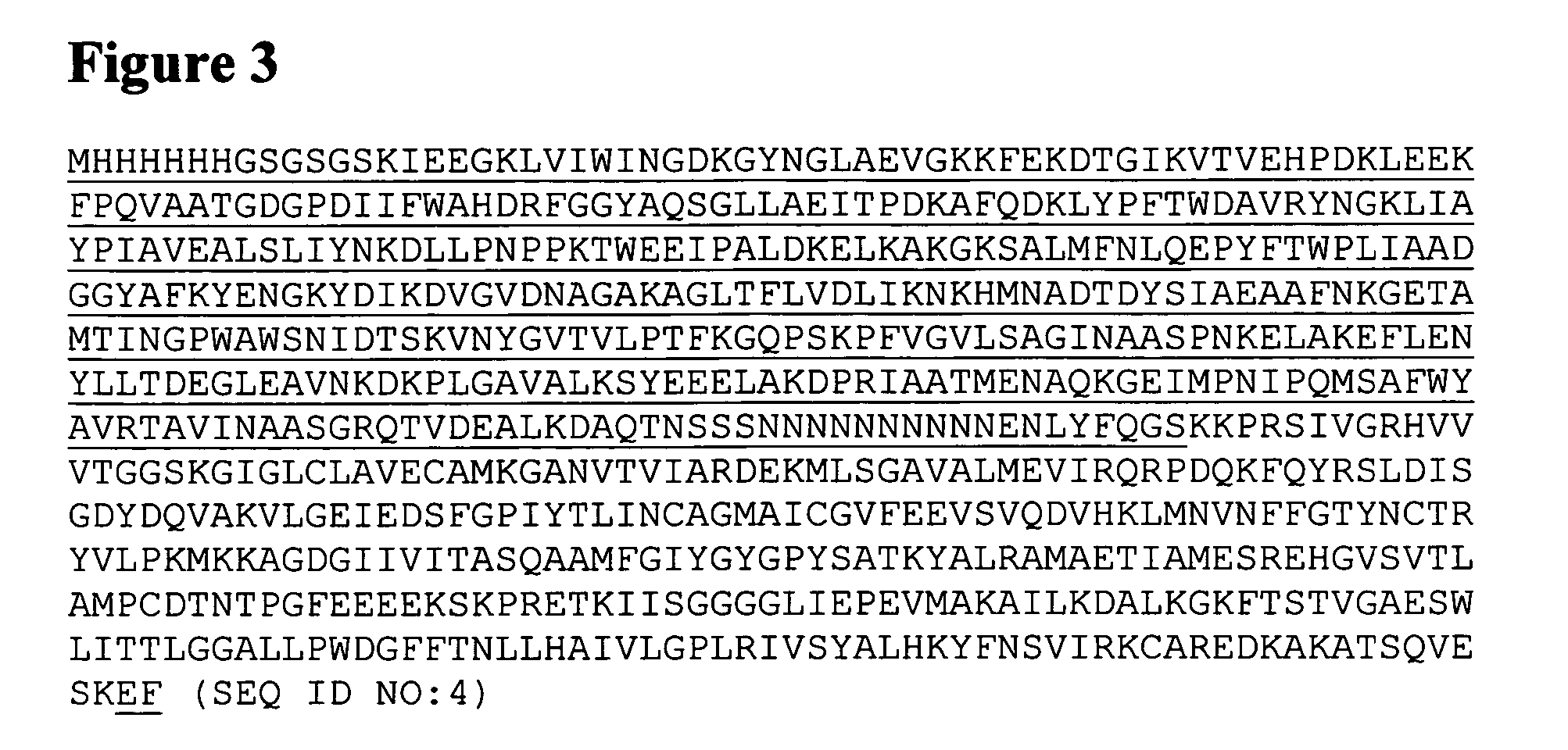Polynucleotides encoding insect 3-ketosphinganine reductase and uses thereof
a technology of insect 3-ketosphinganine and reductase, which is applied in the field of insect enzymes, can solve the problems of a relatively time-consuming and expensive process
- Summary
- Abstract
- Description
- Claims
- Application Information
AI Technical Summary
Benefits of technology
Problems solved by technology
Method used
Image
Examples
example 1
Cloning of a cDNA Encoding Drosophila melanogaster 3-KR
[0143] A cDNA encoding a full-length open reading frame of a 3-KR was amplified from a Drosophila melanogaster cDNA library, and sequenced in its entirety. The cDNA sequence is provided in FIGS. 1A and 1B; the amino acid sequence of the encoded 3-KR is provided in FIG. 2.
[0144] 3KR is expressed throughout the larval stages and is assumed to be ubiquitously expressed, like SPT. Sphingolipid metabolism is essential in insects. Although there are no mutant alleles of 3KR, siRNA causes embryonic lethality. SPT knockout alleles (Dmel gene name is lace) are also embryonic lethal, while weaker alleles yield small, sickly animals with behavioral defects. Sphingolipid synthesis is also essential for growth of Dmel S2 cells in culture, since phosphatidylethanolamine (PE) and phosphatidylserine (PS) pools are derived chiefly from de novo synthesized sphingosine. As PE comprises roughly 40% of membrane lipid, a block in sphingolipid synth...
PUM
| Property | Measurement | Unit |
|---|---|---|
| pH | aaaaa | aaaaa |
| temperature | aaaaa | aaaaa |
| temperature | aaaaa | aaaaa |
Abstract
Description
Claims
Application Information
 Login to View More
Login to View More - R&D
- Intellectual Property
- Life Sciences
- Materials
- Tech Scout
- Unparalleled Data Quality
- Higher Quality Content
- 60% Fewer Hallucinations
Browse by: Latest US Patents, China's latest patents, Technical Efficacy Thesaurus, Application Domain, Technology Topic, Popular Technical Reports.
© 2025 PatSnap. All rights reserved.Legal|Privacy policy|Modern Slavery Act Transparency Statement|Sitemap|About US| Contact US: help@patsnap.com



